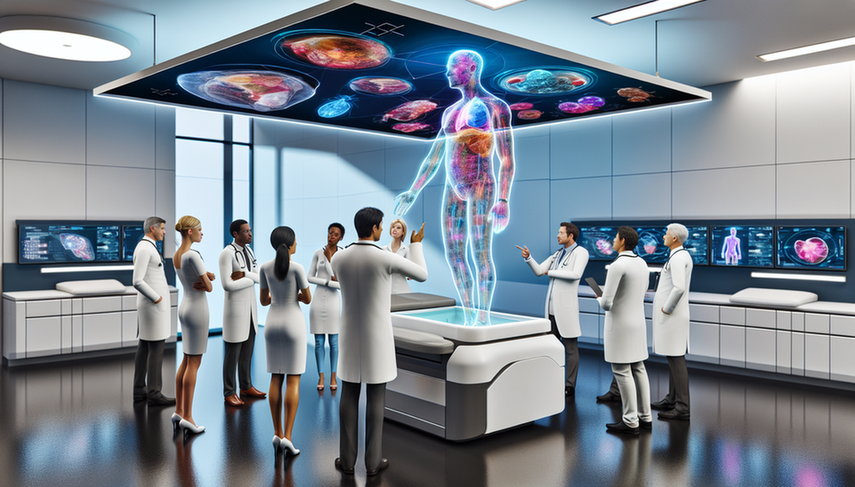Digital Twins in Medicine: Patient Simulation and Predictive Modeling for Therapeutic Personalization with AI

Modern medicine is constantly evolving, and one of the most promising advancements is the use of digital twins. These virtual models of patients enable patient simulation and predictive modeling to enhance therapeutic personalization. The integration of AI in medicine has facilitated the development of these digital twins, which promise to revolutionize how we approach the diagnosis and treatment of diseases.
Diving Deeper into Digital Twins
Digital twins are virtual models that replicate the characteristics of a real patient, allowing for the simulation of their physiological behavior. These models are constructed from population data and patient-specific data, such as that obtained from wearable devices. The ability to perform accurate simulations of drug responses is a crucial milestone for therapeutic personalization [1].
In the realm of complex diseases such as multiple sclerosis, digital twins allow for a more individualized management of the disease. Through AI-based analysis of multiple disease parameters, digital twins can be created that reflect the unique characteristics of each patient, thereby improving doctor-patient communication and facilitating shared decision-making [2].
Furthermore, digital twins are being utilized to predict the effectiveness of different therapeutic approaches in chronic respiratory diseases. These models allow for real-time visualization of the patient's respiratory health, facilitating personalized medicine and early detection of disease progression [3].
Conclusions
The use of digital twins in medicine represents a significant advancement towards therapeutic personalization. Although challenges remain in terms of automation and costs, the potential of these models to improve health monitoring and treatment personalization is undeniable. As technology advances, we are likely to see even greater integration of digital twins into daily clinical practice, transforming healthcare into a more precise and patient-centered process.
Referencias
- [1] Digital patient twins for personalized therapeutics and pharmaceutical manufacturing.
- [2] Digital Twins for Multiple Sclerosis.
- [3] Digital twins for chronic lung diseases.
Created 20/1/2025
